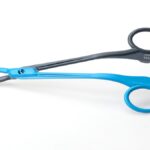Introduction:
Lab faucets play a crucial role in laboratory settings, providing a controlled and reliable source of water for various scientific experiments and procedures. Understanding how a lab faucet works and the key components involved is essential for researchers, scientists, and lab technicians. In this comprehensive guide, we will explore the inner workings of a lab faucet and delve into the intricate details of its various components.
- Water Supply and Connection:
A lab faucet is connected to a reliable water supply source, usually through a network of pipes. The water supply is typically provided by the building’s plumbing system, which ensures a continuous flow of water. Lab faucets are designed to connect easily to these plumbing systems, allowing for a seamless flow of water into the laboratory.
- Water Control Mechanism:
The primary function of a lab faucet is to control the flow of water. This is achieved through a series of mechanisms that allow users to regulate the flow rate and temperature of the water. The control mechanism may vary depending on the type of lab faucet, but most commonly, it consists of a handle or knob that can be turned to open or close the water flow.
- Valve Assembly:
The valve assembly is a critical component of a lab faucet that controls the water flow. It consists of various valves, seals, and gaskets that ensure a leak-free operation. The most commonly used valve in lab faucets is the compression valve, which consists of a rubber or ceramic washer that compresses against a seat to stop the water flow. When the handle is turned, the valve opens, allowing water to flow through the faucet.
- Spout and Nozzle:
The spout and nozzle of a lab faucet determine the direction and shape of the water flow. The spout is the main outlet through which water is discharged from the faucet, while the nozzle is a detachable component that can be adjusted to control the water flow pattern. Different types of nozzles are available, including straight, angled, and aerated nozzles, each serving specific purposes based on the experimental requirements.
- Temperature Control:
In certain lab settings, precise control of water temperature is necessary. Lab faucets often incorporate temperature control mechanisms to provide hot and cold water options. Temperature control is achieved through the integration of mixing valves, which blend hot and cold water to achieve the desired temperature. These valves can be adjusted to maintain a consistent water temperature throughout experiments.
- Safety Features:
Lab faucets are equipped with safety features to prevent accidental water contamination or damage. Some faucets include a vacuum breaker, which prevents backflow of potentially contaminated water into the building’s plumbing system. Additionally, some faucets are equipped with a built-in eyewash station or emergency showerhead, allowing immediate access to water for emergency situations.
- Material Selection:
The material used in the construction of lab faucets is an important consideration, as it affects the durability, chemical resistance, and overall performance of the faucet. Commonly used materials include brass, stainless steel, and various types of plastics. The choice of material depends on factors such as the type of experiments conducted, the chemicals used, and the required longevity of the faucet.
Conclusion:
Lab faucets are indispensable tools in laboratory environments, providing a controlled and reliable source of water for scientific experiments and procedures. Understanding how lab faucets work and the key components involved is essential for ensuring optimal performance, safety, and efficiency in laboratory settings. By exploring the water supply and connection, water control mechanisms, valve assembly, spout and nozzle, temperature control, safety features, and material selection of lab faucets, researchers, scientists, and lab technicians can make informed decisions regarding their use and maintenance.

